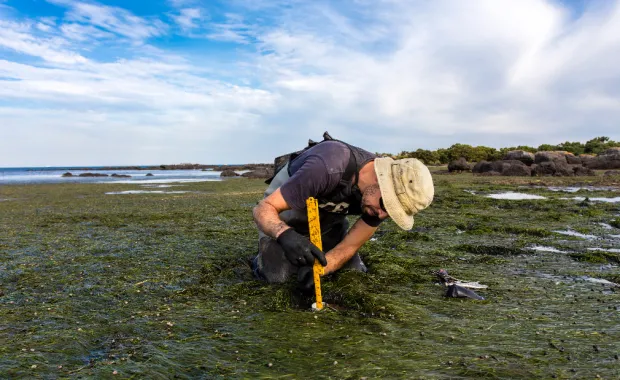Environmental regulation is both complex and interdisciplinary, bringing together ethics, science and technology. Here within the United States, the Environmental Protection Agency (EPA) works with state, tribal and municipal co-regulators to enforce environmental regulations and improve the health of our communities.
This collaborative model, however, presents challenges in determining the best way to implement enabling technology. Therefore, co-regulators must plan carefully, while acting purposefully and flexibly. Based on our experience supporting the environmental regulatory community, we have identified four traits of successful co-regulator collaboration:
Define roles and responsibilities with realistic and achievable levels of engagement
Collaboratively developed investments require a greater level of coordination. There must be a broad understanding of shared commitments and resource constraints. Staff from smaller organizations often wear many hats and may need to adjust their involvement over time. As the largest environmental regulator, EPA often takes the lead on cooperatively developed IT systems but must work closely with broad co-regulatory partners to meet the needs of all stakeholders.
One recent CGI-supported initiative focused on emissions reporting demonstrates the importance of defined roles, commitment to collaboration, and flexibility. Applying an agile approach, EPA’s product owners engaged with the project team daily to enable a collaborative approach to establish priorities. Applying a user-centered design approach with robust industry and state end user engagement enabled the product owners to make informed decisions, set realistic goals and determine what functionality was most critical to deliver.
Engage early with stakeholders across all partner organizations
New technology implementation requires the input of program and policy experts, management and the IT department – which, in some states, is part of a different agency. While program and policy personnel may be excited about a new cooperative approach, management needs to consider process changes and budgetary impacts. IT staff will need to understand the architecture and its alignment with their agency’s security policies. This multi-agency dynamic presents a challenge for organizational change management.
Each organization has its own data-sharing approaches, preferences, strengths and weaknesses. Early understanding of objectives and a shared sense of value and buy-in across all stakeholders is critical to the adoption of any new environmental system.
Build on clearly defined use cases supported by statute
EPA and the co-regulatory community have forged their most successful IT solutions from a common definition of need. Stakeholders at the federal, state, tribal and municipal levels must agree on the problem they are trying to solve and on its level of priority. If there are regulatory or statutory gaps between the co-regulators, leaders must be cautious not to look to new governance models or IT solutions as means to fill them.
Develop collaboration models to be flexible
While some collaborative efforts meet the needs of a discrete set of stakeholders, others are made for wider adoption. Smaller efforts might identify a commercial or government off-the-shelf solution that will meet most requirements, with little customization. However, extensive initiatives—such as those involving multiple states or multi-industry, environmental data-sharing requirements and federal standards—require flexible hybrid approaches.
Environmental leaders must determine whether national standards already exist. Wherever they identify variations in data standards or business processes, they must ensure the architecture accommodates those. Otherwise, adoption is at risk. Using APIs to share data across distributed systems can help resolve variability in data structures, data schema and business rules. The Interim E-Enterprise Digital strategy highlights the value of using open data and open data standards.
Defining high-level requirements early helps determine the right balance within the architecture to meet the level of flexibility. Since this is not always possible, architecture flexibility becomes that much more important. When the project begins with unknowns, a rigid architecture can impede broader adoption.
Throughout our careers, we have been fortunate to support many successful EPA/state co-regulator collaborations. While the environmental regulatory community faces many challenges, continued collaboration and co-creation of new solutions can drive positive results. Federal and state regulators each want to better share data, enforce environmental regulations, help protect human health and the environment, address critical climate change issues and advance environmental justice priorities. Bearing in mind these hallmarks of successful programs positions the environmental co-regulatory community to have even greater influence in the future.
Back to top





